Dealing with a flat tire is an inevitable part of driving, but fixing it doesn’t have to be daunting. With the right tools and a bit of know-how, you can get back on the road in no time. Here’s a step-by-step guide to fixing a flat tire easily.
Other Topics You Might Like
Helpful Products You Might Like
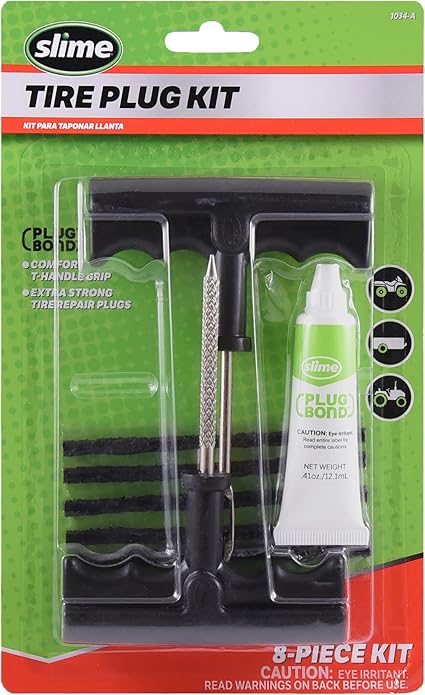
Tire Repair Plug Kit
Fix-A-Flat Aerosol Tire Repair
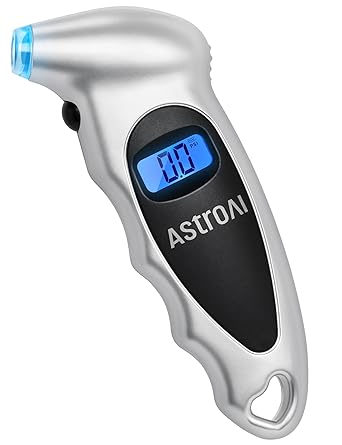
AstroAI Tire Pressure Gauge Digital
"(Paid Links)" 
Safety First
Before you begin.
Gather Your Tools
To fix a flat tire, you'll need a jack, a lug wrench, a spare tire, and a tire iron. Most cars come with these tools, but it’s a good idea to check your trunk and ensure everything is in working order before you need them. If you have a tire repair kit, it might include a tire sealant and a plug for small punctures, which can be a quick, temporary fix.
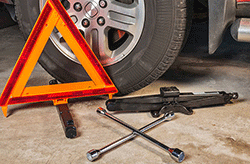
Loosen the Lug Nuts
Use the lug wrench to loosen the lug nuts on the flat tire. Turn the wrench counterclockwise, but don’t remove the nuts entirely just yet. You might need to apply some force, so it’s easier to do this while the tire is still on the ground. Loosening the nuts now will make it easier to remove them once the car is lifted.
Lift the Vehicle with the Jack
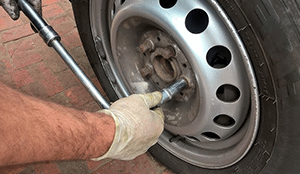
Locate the jack point nearest to the flat tire, usually marked on the vehicle’s underbody. Place the jack under the car and lift the vehicle until the flat tire is about six inches off the ground. Ensure the car is stable on the jack before proceeding.
Remove the Flat Tire
Now that the car is lifted, fully remove the loosened lug nuts and set them aside in a safe place. Carefully pull the flat tire off the wheel hub. Place it flat on the ground to avoid it rolling away.
Install the Spare Tire
Align the spare tire with the wheel bolts and push it onto the wheel hub. Once it’s in place, hand-tighten the lug nuts onto the bolts. This helps ensure the spare tire is securely attached before lowering the car.
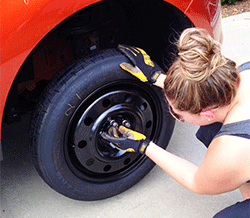
Lower the Vehicle and Tighten the Lug Nuts
Use the jack to lower the vehicle back to the ground. Once the car is fully lowered, use the lug wrench to tighten the lug nuts in a crisscross pattern. This ensures even pressure on the wheel and prevents wobbling. Tighten each nut as much as possible to secure the tire.
Check the Tire Pressure
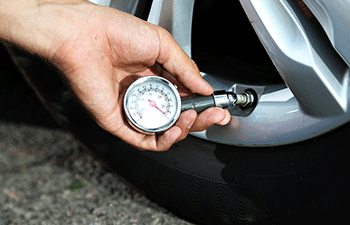
After replacing the tire, it’s crucial to check the pressure of the spare tire. If you have a tire pressure gauge, use it to ensure the spare is properly inflated. If not, drive slowly to the nearest gas station and fill the tire to the recommended pressure. Remember that spare tires are often temporary and not designed for long-distance travel at high speeds.
Drive Cautiously
With your spare tire in place, drive cautiously and avoid sudden stops or sharp turns. Spare tires, especially the smaller “donut” types, are not meant for high speeds or long distances. Your priority should be to get the flat tire repaired or replaced as soon as possible.
Repair or Replace the Flat Tire
After you’ve installed the spare, take your flat tire to a professional to assess the damage. If the puncture is small and in the tread area, it might be repairable. However, sidewall damage or large punctures usually mean the tire needs to be replaced.
Fixing a flat tire is a valuable skill that can save you time and money. With these steps, you can handle a flat tire with confidence and get back on the road safely.
